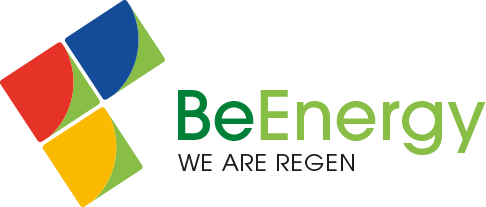Be Energy : Solutions Batteries Plus
LEAD-ACID BATTERIES
How much does a regenerated battery cost?
The cost of a regenerated battery: a profitable investment
Investing in a regenerated battery rather than a new one is an increasingly popular decision. Not only is it good for your budget, but it also has a positive impact on the environment. The principle is simple: using electrochemical processes (such as desulfation), the capacity and lifespan of a used battery are restored.
According to ADEME, regenerating a battery saves 30 to 70% compared to the price of a new one, while extending its life by 3 to 6 years on average. It is an effective solution that also reduces the amount of dangerous waste.
Which batteries can be regenerated?
Regeneration is possible for several types of batteries:
- Traction batteries (forklifts, aerial work platforms): regeneration can reduce costs by 40 to 70% compared to the price of a new battery.
- Stationary batteries (inverters, data centers): expect savings of 40 to 60% depending on capacity and initial condition.
- Starter batteries (trucks, heavy goods vehicles): a new battery generally costs €100 to €200, whereas regeneration can halve the cost to around €70 to €140.
Please note that regeneration has its limits. Batteries that are too damaged or whose plates show defects due to sustained use or lack of maintenance are unfortunately not regenerable.

Starter batteries

Traction Batteries

Stationary batteries
Regenerated battery vs. new battery: a price difference that makes all the difference
The cost of a new battery can be very high.
To illustrate, a 48V or 80V lead-acid battery for a forklift truck costs between €4,000 and €10,000.
For lithium-ion batteries, prices can rise to €15,000 or €20,000.
In contrast, a regenerated battery is much more affordable.
Prices are generally 50 to 70% cheaper, or around €2,000 to €3,500 for an equivalent traction battery (48V or 80V).
Let’s take a concrete example to illustrate this:
- New 48V/500Ah battery: €7,500
- Regenerated battery: €3,000 with 90+% recovery of original capacity
- Your immediate savings: up to €4,500
As a bonus, this approach avoids the burial of approximately 1000 kg of lead and sulfuric acid, which is a significant gesture for the planet (3 tons less CO2 emissions).

Which factors affect the price of a regeneration?
The final cost of regeneration depends on several factors, including:
Technology
Lead-acid batteries are the most common and are easily regenerated.
NiMH batteries (self-charging hybrid vehicles) can also be regenerated with excellent results on TOYOTA models, certain STELLANTIS models, etc.
Lithium-ion batteries, although more complex, can be reconditioned for 40 to 60% of the price of a new battery.
Capacity and format
Each battery has a different capacity and voltage.
Depending on the model and the complexity of the battery technology, the regeneration process varies and will impact its final cost. Based on these factors, the savings can be 30 to 70% depending on the model.
Initial condition
The initial condition depends on several factors:
TRACTION BATTERY
- The general condition of the battery (case + cells) for traction batteries.
- The maintenance carried out during its use.
- The battery’s workload: frequency of use and demand/intensity of use.
STATIONARY BATTERY
- The general condition of the battery.
- The maintenance carried out during its use (in floating or disconnected mode).
- Demand: this type of battery is only used in the event of a power outage to ensure continuity of activity. In some cases, this can lead to a significant loss of capacity requiring more specific intervention.
Once regenerated, a battery can regain 80 to 100% of its useful capacity and its service life is extended
by 70 to 100%. This represents an excellent return on investment.
Total cost of ownership (TCO): a long-term view
When comparing new and remanufactured products, it is important to look beyond the purchase price. It is the total cost of ownership (TCO) that gives a true picture of profitability.
*Depending on the maintenance performed on the battery by the customer.
Studies by the CEA and ADEME prove it: the TCO of a reconditioned battery is reduced by 40 to 60%, a compelling argument for businesses.
In conclusion: how much does a regenerated battery really cost?
On average, a regenerated battery is half the price of a new one. The exact cost will depend on the technology, initial condition, and capacity of the battery, but the cost savings are consistent. In addition to the direct savings, you benefit from a 40-60% reduction in TCO and a positive environmental impact.
To find out if your batteries are eligible for regeneration, the first step is to have our specialized technicians perform a thorough battery diagnosis. This diagnosis will allow you to know the exact costs and potential savings associated with the process.
